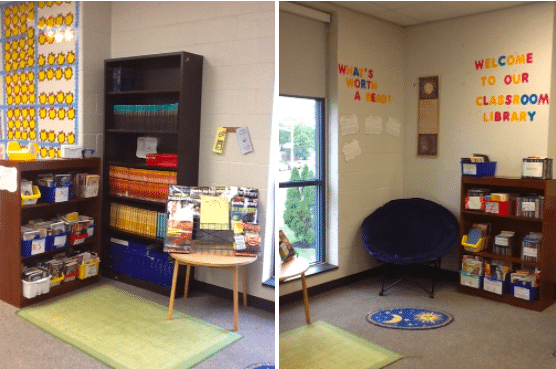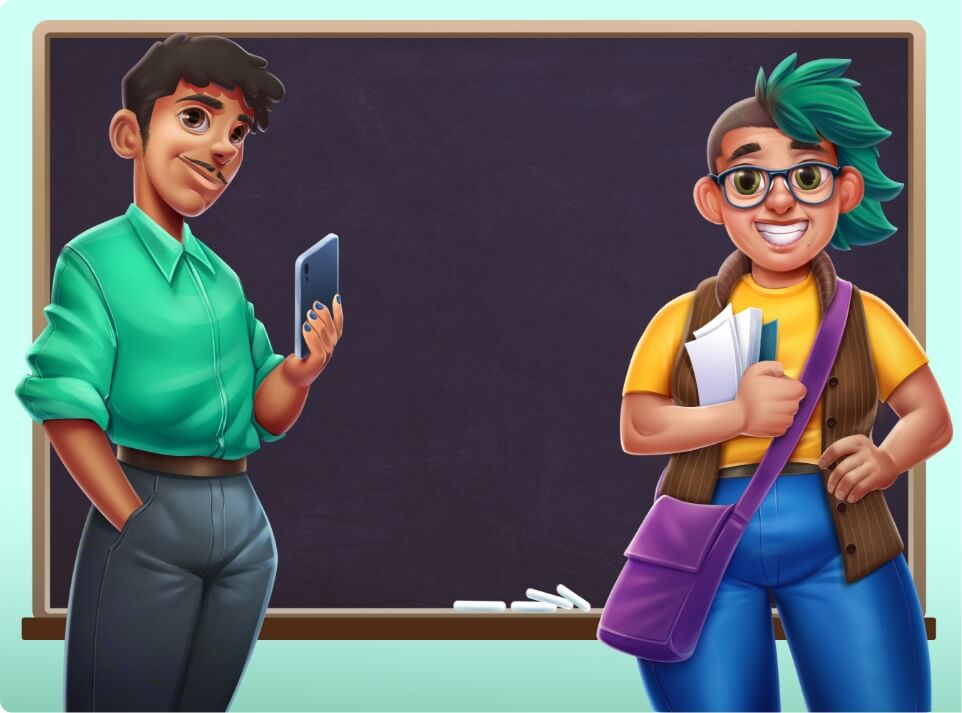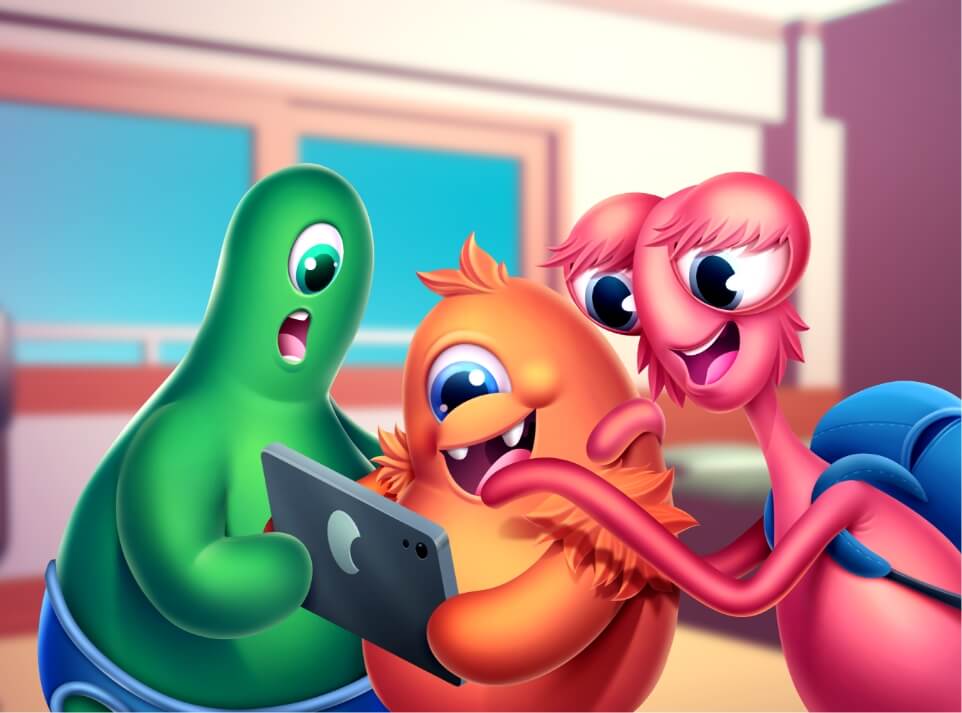Bulking Up Your Classroom Library
This blog post was written by Lauren Lutz. She is a classroom educator located in central New Jersey. She earned her undergraduate degree in elementary education from Boston University, and a master’s degree from New York University, Steinhardt in Digital Media Design for Learning. Click here to see Lauren’s full bio.
Six years ago, I walked into my first-ever classroom. I remember unlocking the door (my first teacher key!), stepping inside (my first time at the front of the room!), and stepping over to the desk (my own desk!). Sure, I had student-taught before, but this was it—this was real! This was official! I was a teacher!
That feeling of delight lasted until I got over to the bookshelves in the corner of the room.
Across three bookshelves, my classroom contained . . . forty-five books. It didn’t take long to quickly run some very rudimentary mathematical figures in my head. Each class I taught would probably have between twenty-five and thirty students. I didn’t have enough books for the students to have two each. I was WAY, WAY below experts’ recommendations!
How Many Books Am I Supposed To Have?
If you’re not familiar with recommendations about classroom libraries, Scholastic offers some general advice. In regards to the amount of books that a standard classroom library should contain, “[e]xperts claim a classroom library should have at least 20 books per student” (Newingham). In other words, “a typical class of 28 students would have a classroom library of close to 600 books” (Newingham). Columbia University Teacher’s College Reader’s and Writer’s Workshop (TCRWP) offers similar advice, as shown in the below infographic which details the number of leveled books needed for each grade level classroom. Needless to say, those numbers made me feel much more nauseous than informed.
As a middle school teacher, at least I had the comfort of knowing that a novel would take a student upwards of a week to read. I knew I had some time to find books! But for a first- or second-grade teacher? Lucy Calkins of Teachers College, Columbia University points out that “young readers can read and reread a stack of ten little books in a day” (Calkins). Having a large volume of books is of critical importance in the early elementary years.
I’ve heard some teachers roll their eyes at recommendations made by institutions like Scholastic or TCRWP. “They just want us to buy from their catalogs!”, some of my more skeptical colleagues might argue. However, formal research does corroborate with these organizations’ estimates. A meta-analysis on reading conducted by Guthrie and Humenick (2004) found that the two indicators most likely to “increas[e] reading motivation and comprehension were (1) student access to many books and (2) personal choice of what to read.” And even without studies proving the importance of book volume in a classroom library, let’s be real with ourselves: we all know a classroom with forty-five books isn’t going to prove appealing or engaging.
How to Get More Books
So, what did I do about it? I got busy. Here are a few tips on how to quickly amass books for your classroom libraries:
- Beg Your Friends
I called and texted my close friends and family members. I posted on social media. I reached out to everyone I knew. If I was to do this again, though, I would suggest targeting people at transitional points in their lives. These people might actually find it a blessing to be able to de-clutter. I reached out to recent college graduates who were moving out of their childhood homes. Many of them had books from all stages of their childhoods and were more than enthusiastic about rehoming them. I also contacted family members and friends with teenage children, and many of their kids had outgrown many of the picture books and chapter books on their bookshelves. They parted with them easily, happy to donate them to a needy classroom. In the end, I wound up with 300 books—for free!
- Visit Your Local Library
My local public library has a small shelf right near the circulation desk of books for sale. These are typically older titles, books that have lost popularity over the years or have just started looking so worn that a reader isn’t likely to pick them off the shelves. If your library doesn’t have a permanent area for bookselling, inquire about seasonal sales. Most libraries have book sales on at least an annual basis as a fundraiser.
The books I got from my library certainly weren’t the best books, but beggars can’t be choosers. I bought armfuls for 25 cents a title and used them to bulk up my empty bookshelves. To my surprise, many of them actually got read on a regular basis by my students! Those that didn’t got weeded out in later years once my library finally reached a suitable size.
- Look at Garage Sales and Online Buy/Sell Groups
Back in 2011 when I was getting started, I drove around town scouting out yard sales. In the past few years, though, I’ve turned digital. Look on Facebook for locally-based Buy/Sell groups. You will find hundreds of people in your area looking to sell household items, usually at very affordable prices. I’ve found moms selling entire shopping bags full of books for under $10. Plus, these books often turned out to be more recent titles than the ones I was finding at my library. I once paid five dollars for the complete Harry Potter series, the complete Twilight series, and every children’s book ever authored by Cornelia Funke. It was like I hit the jackpot!

Above: Some photos of my class library at the beginning of my second year in the classroom. I had gone from 45 books to 500+ in a year.
Over the course of my 4.5 years as a language arts teacher, my classroom library swelled admirably. I recall one year my school custodian asked everyone to inventory their books before our rooms were emptied for a summer-long painting project. I enlisted the help of ten students to join me at lunchtime. At final count, I had 1,237 books of my own, as well as 45 school-issued texts. I had not only met experts’ recommendations for book volume, I had doubled them! It takes time and energy, but I promise you that when your class hunkers down in the library to sort through bins of books, their excitement makes the investment worthwhile. Good luck, teachers!
Sources:
Calkins, L. Teachers College Reading and Writing Project: Classroom libraries [overview].
Heinemann. Retrieved 10 August 2017 from https://www.heinemann.com/calkinslibraries/ assets/tcrwpclassroomlibrariesoverview.pdf
Guthrie, J. T., & Humenick, N. (2004). Motivating students to read: Evidence for classroom
practices that increase reading motivation and achievement. In P. McCardle & V. Chhabra (Eds.), The voice of evidence in reading research (pp. 329 – 354). Baltimore, MD: Brookes.
Newingham, B. (n.d.). Give your classroom library a boost. Scholastic. Retrieved 10 August
2017 from https://www.scholastic.com/teachers/articles/teaching-content/give-your- classroom-library-boost/
Follow Lauren on Twitter @MsLutzLinwood
Categories
comments for this post are closed

